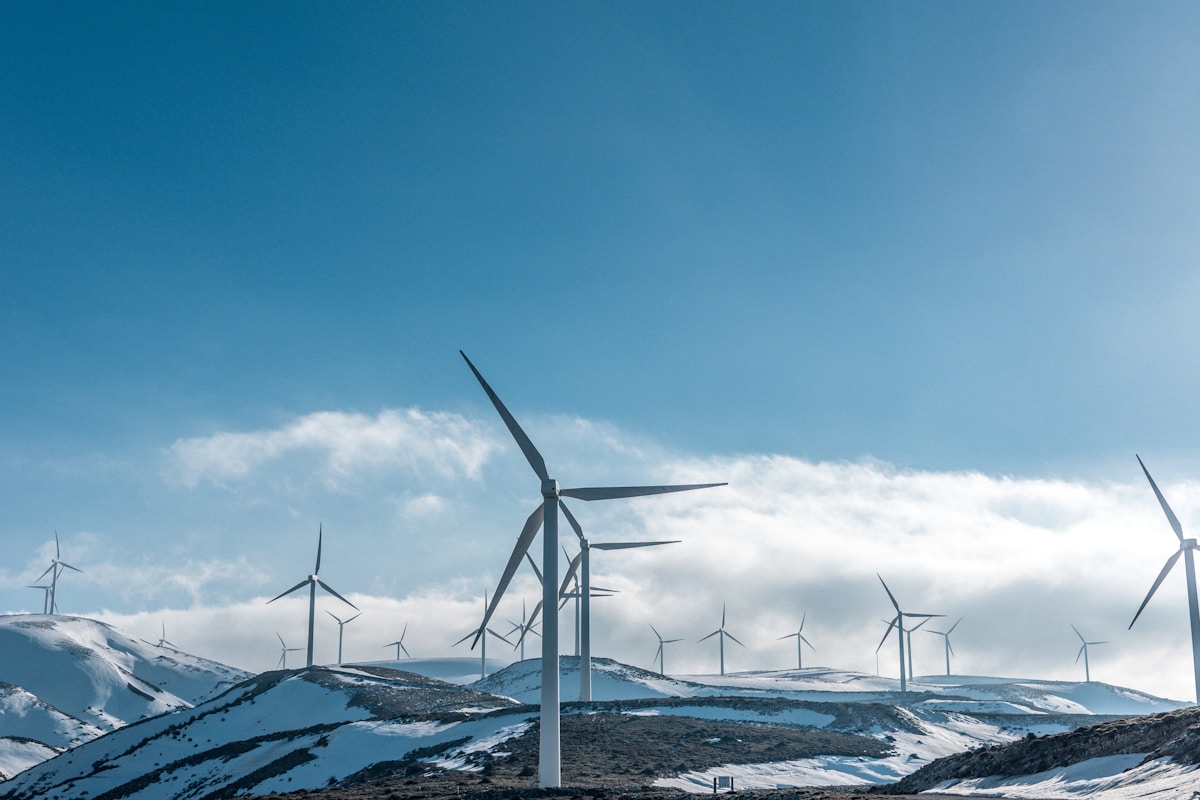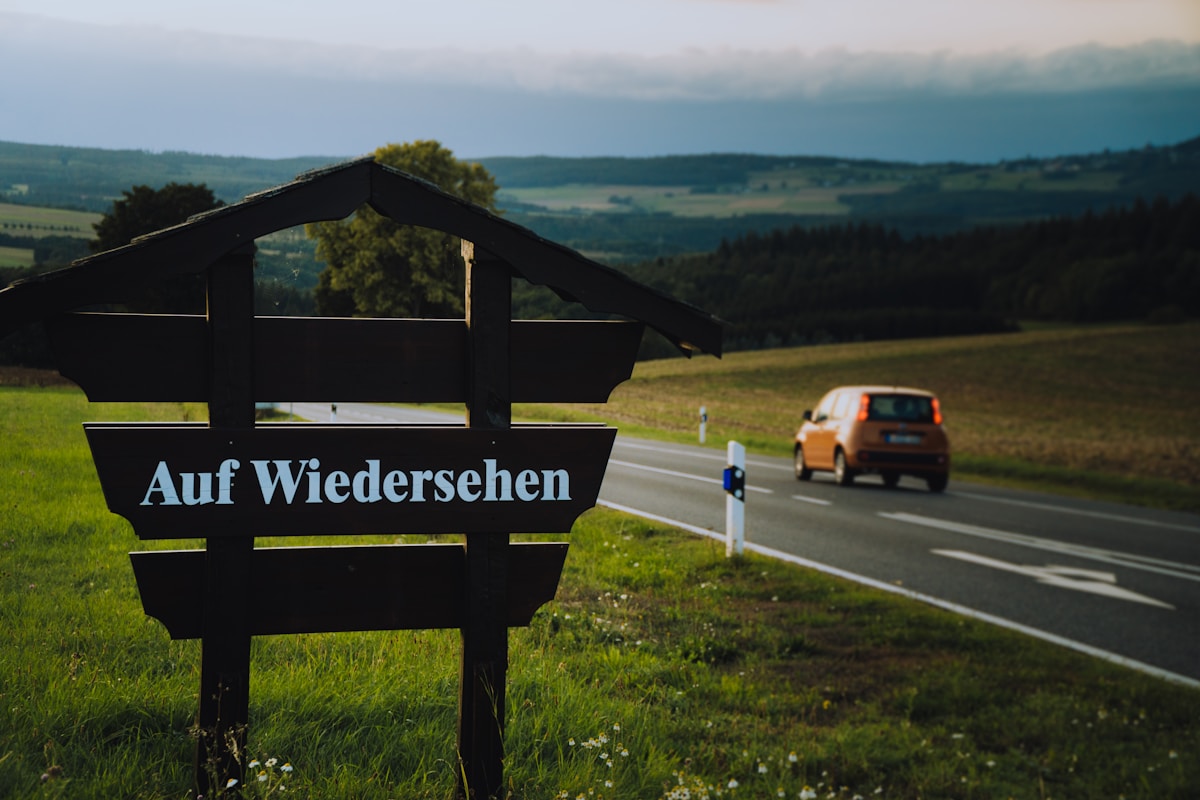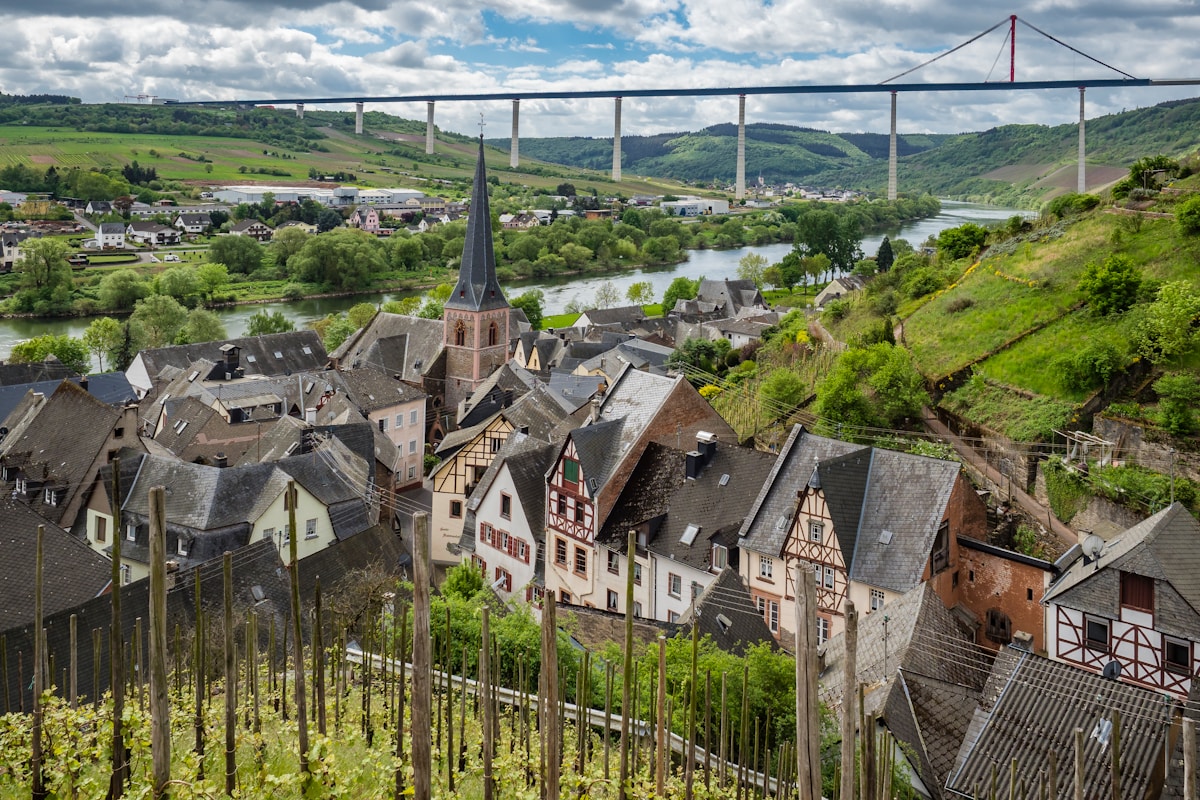Wind Energy in Germany: Lessons to Learn

Wind energy is a sustainable, renewable energy source that has a far less negative impact on our environment than burning fossil fuels. Nevertheless, this developing power source has met with public opposition globally for a variety of reasons from visual impacts to health concerns. By examining the experience that Germany is currently facing with its transition to wind energy as a case study, we can learn from the public resistance that is being experienced there and endeavor to use this information as a way to minimize future opposition to wind power.
Specifically, in Germany, as of January 1, 2021, the government passed reforms to the Renewable Energy Act (EEG) that promote the expansion of renewable energies (Appunn 2020). By 2030, Germany has set the goal of having renewables account for 65% of energy consumption and it put into law the requirement that by 2050 Germany will be greenhouse gas neutral (Appunn 2020). To achieve these goals, Germany needs to increase its onshore wind capacity. However, the country faces social opposition to wind energy because of concerns about health effects and environmental destruction as a result of the government’s ongoing failure to ensure that there is cooperation, flexibility, and dissemination of accurate information about benefits of wind turbines.
The social opposition has manifested itself in local protests and legal actions, and slowed the installation of wind turbines (Bender 2020). Social acceptance is imperative for the future of wind energy in Germany. Therefore, in order for Germany to reach its goal of having 65% of power consumption come from renewable energy by 2030 for all current and future wind projects, the German government must ensure that there is cooperation between wind developers and the local communities, flexibility to meet the differing needs of local communities, and proper education about the benefits and safety of wind energy. Introduction to the Energy Transition and the Social Opposition Wind Energy Faces
It is important to understand the background of the energy transition in Germany before examining the social opposition in regard to wind energy specifically. Energiewende [energy transition] is Germany's policy for reducing nuclear power while increasing reliance on renewable energy (Fritsch 2020). The energy transition concept is widely supported in Germany (Renewable Energy Agency 2021).
In 2011, Germany harnessed one-quarter of its electricity from nuclear energy, but after the Fukushima Daiichi accident in Japan, the government ordered the beginning of the phase out of nuclear energy (World Nuclear Association 2021).
The transition away from nuclear energy has been widely supported by Germans.

In a 2020 survey by the Renewable Energy Agency (AEE), 86% of participants were in favor of greater use of renewable energies (Renewable Energy Agency 2021). Currently, Germany’s onshore wind turbines have a capacity of 55 gigawatts (Amelang and Wehrmann 2017).
To reach their 65% renewable energy target by 2030, the EEG plans to achieve onshore wind capacity of 71 gigawatts (Appunn 2020). In Germany from 2013 to 2017, at least 1,000 new wind turbine plants have been installed each year, meaning at least three gigawatts were added (Bundesverband WindEnergie 2020). In 2018, this number dropped to 743 (or two gigawatts) and, in 2019, it fell to 325 (or one gigawatt) (Bundesverband WindEnergie 2020). This recent slowdown in wind turbine installation, in large part, is a result of the social opposition that the projects face (Reusswig et al. 2016). In order to reach the 71 gigawatt capacity plan, Germany must address this social opposition and increase the rate at which wind turbines are being installed.
Negative Health Effects of Wind Energy

German citizens who oppose wind energy expansion assert that wind turbines pose a significant negative impact on human health (National Research Council 2007, 156). Specifically, the Vernunftkraft [power of common sense] is a national social movement opposing the wind energy transition, with one of their main points of contention being the negative human health effects which include a variety of claims by individuals who have resided in close proximity to the turbines (Fritsch 2020).
The first complaint focuses on the noise levels created by turbines as they are huge moving machines that people fear might cause a major threat. According to the US National Academy of Sciences, some older downwind turbines emit infrasound every time a rotator blade interacts with wind behind the turbine (National Research Council 2007, 158). While it is believed that energy at low frequencies does not pose any health hazard, it has been claimed that certain people feel vibration or pulsation from wind turbines to the extent that they are able to count in their chests the beats of the blades
even when they are unable to see or hear them (National Research Council 2007, 159). This is a disputed phenomenon due to the fact that the applications for wind farms state that the turbines create no “low-frequency, tonal, or impulsive characteristics,” yet the residents surrounding the turbines argue the opposite (Lange 2018).
Audiologist Stephen Cooper argues that this pulsating signal, whether or not it is audible to the human ear, may mean adjusting the list of impacts from wind turbines to include the internal noise levels that some individuals sense (Cooper and Chan 2020). He adds that the reason that there were never any socio-acoustic studies done on wind turbines is because the number of people actually affected by these types of symptoms is a very small proportion of the entire population (Cooper and Chan 2020). Despite the fact that only a small segment of the population is affected by these symptoms, the Vernunftkraft movement feels strongly that this phenomenon should be addressed.
Another concern voiced by the Vernunftkraft movement is explained in a report by Dr. Nina Pierpont where she describes something known as “wind turbine syndrome” which is the term coined for the common collection of symptoms reported by individuals who live close to wind turbines (Knopper and Ollson 2011, 7). These reported symptoms include sleep disturbance, tinnitus (ears ringing), headaches, dizziness, nausea, and it has been alleged that all of these symptoms are associated with proximity to turbines (Knopper and Ollson 2011, 7).
Many of these reported symptoms are actually believed to be the result of the Nocebo effect, which explains that negative expectations lead to symptom reporting rather than a link between symptoms and wind farm sound (Crichton et al. 2014, 1). It is believed that certain people living close to wind farms are fearful of the effects on their health that the turbines will have. These worries produce negative expectations that turn people’s attention over to their bodily functions and change the way individuals explain symptoms (Crichton et al. 2014, 2). While many of the adverse health effects of wind turbines are disputed and their reports are few, the individuals affected nevertheless wish to have their issues addressed and feel that they have been let down by their government (Bues 2020, 116).
Health Benefits of Wind Energy and Proposed Government Action

The actual health effects of wind turbines is a subject that is relatively new and still in need of more investigation to have a nuanced understanding, whereas the positive effects are well understood. That being said, there are numerous studies that have been conducted with varying points of interest that can help provide a better understanding of this growing topic. The most explored health effect of wind turbines is noise, with the high quality articles supporting a connection between wind turbine noise and reported annoyance, but no connection of this noise to stress or sleep effects (Freiberg et al. 2019, 460). It is also important to keep in mind the health benefits associated with transitioning to a renewable energy source. Air pollution is a serious health concern that is a product of burning fossil fuels; the alternative to renewables. In 2017, air pollution was responsible for five million deaths globally, meaning it accounted for roughly 9% of deaths that year (Ritchie and Roser 2017). Clearly, pollution is a much larger health threat than the annoyance associated with the wind turbines that address the air pollution problem. While it is clear that the wind turbines should continue to be installed, it is important to do so in a way that is sensitive to the affected individuals.
The German government has been unsuccessful in addressing health concerns, and this has caused frustration in the opposition.
In a case study conducted in which people in the US and in Europe were surveyed, researchers found that fewer than five percent of residents were strongly annoyed by wind turbines noise (Hübner et al. 2019, 8). Despite this number being so low, the people who do feel affected have been effective in slowing the implementation process (Bender 2020). That same survey found that, despite a higher percentage of acceptance in Europe than in the US, more European residents were strongly annoyed by wind turbines noises (Hübner et al. 2019, 8). The article suggests that this higher sensitivity is likely related to stress associated with the planning process (Hübner et al. 2019, 8). The frustration with the planning process in Germany is demonstrated by a focus group discussion, where individuals expressed how they felt let down both by the state government and on the municipality level (Bues 2020, 116). The interviewed individuals shared a feeling of abandonment by their representatives in their opposition to wind turbines (Bues 2020, 117).

Based on my research of this topic, I propose that the German government focus on engagement with the affected individuals and on disseminating information about the health benefits of transitioning to renewable energy, while staying up-to-date with the recommended distances when planning new sites. I believe that it is also crucial that the government stresses, through the media, the importance of transitioning to renewable energy and ending the use of fossil fuels, which pose a proven health threat. Furthermore, it is key that the German government keep up with future studies and regulations for wind turbines to ensure the health of communities is protected.
Another opportunity for the government to improve its approach is offered by virtue of the fact that currently Germany’s pioneer wind turbines are reaching the end of their feed-in-tariffs, which means that many wind parks will have to come up with funding without government support (Wettengel 2020). I see the end of the feed-in-tariffs as an opportunity for the German government to make available new tariffs to upgrade some of the existing turbines to newer models and to have the turbines that are major points of contention for opposition discontinued.
The upgraded turbines will increase energy capture by 12% and therefore require fewer to achieve the same power generation, and allow for installations to be made in southern Germany where wind speed is lower on average and fewer turbines have been installed (Energy.Gov n.d., Masurowski et al. 2016). By installing turbines in the south, the German government will also address the problem it faces with energy distribution caused by the controversial SuedLink energy transmission lines, bringing energy from the north of Germany to the south (Komendantova and Battaglini 2016). This resulted in southern parts of Germany enjoying the benefits of wind energy without bearing any of the burden, creating an imbalance and frustration.
Environmental Destruction Because of Wind Energy
In addition to health concerns, the Vernunftkraft movement also cites environmental destruction as a major reason for their opposition to the wind energy transition (Fritsch 2020, 15). Germany’s decision to transition over completely to renewable energy has come under scrutiny from environmentalists concerned with the effects of wind turbine installation on wildlife and ecosystem conservation. Wind turbines require large areas where wind conditions are fairly constant, and sufficient

enough to create energy, in order to function properly (Voigt et al. 2019, 2). In these areas, migratory insects who fly at heights of up to 60 meters have been getting killed at alarming rates by turbines. It is estimated that about 5% of migrating insects are killed this way (Peiser et al. 2019, 1). With Germany’s continuing increase in turbine installation, the availability of favorable areas has decreased significantly in recent years, and so Germany has resorted to using areas with less than favorable wind conditions as well as areas that many considered to be too valuable for wind energy such as forests (Voigt et al. 2019, 2).
The turbines’ ability to reduce fragment and/or degrade habitat for wildlife as a result of their placements is a substantial risk to the environment (Energy.gov, n.d.). In addition, the building of wind turbines in areas such as forests directly causes habitat loss for certain species surrounding the turbines (Laranjeiro et al. 2018, 4). While certain species may be able to adapt to these changes in their environment, specialist species are vulnerable to these changes (Laranjeiro et al. 2018, 4). The development of these turbines has had a notable effect on reduced flight activity which is due to habitat loss (Laranjeiro et al. 2018, 3). Many bird populations have had to resort to altering their path of flight in order to avoid turbines. The worry here is that this may have a negative effect on population health due to the high concentration of wind farms in Germany (Laranjeiro et al. 2018, 3).
The other substantial risk to the environment cited by those opposing wind turbines is the increasing evidence of an association between wind energy production and negative effects on certain species, most notably the bird and bat populations (Voigt et al. 2019, 2). Studies conducted on German wind turbines have produced data that estimates a median collision rate of 0.14 red kites or 0.47 buzzards per wind turbine per year (Peiser et al. 2019, 21). Considering that Germany had 29,608 wind turbines in place as of 2020, this collision rate is very concerning (Bundesverband WindEnergie 2020). Environmentalists are even more worried about the fact that wind turbines have recently been identified as a major anthropogenic cause of mortality for bats globally (Voigt et al. 2019, 2). While the reason for such high vulnerability in bats when it comes to wind turbines is unclear, it has been estimated that each year 10-12 bats are killed at each wind turbine in Germany (Peiser et al. 2019, 10). Given that bats are quite heavily protected under EU and UN habitat and migratory species agreements, it has become a

worry that the EEG may conflict with national and international efforts to protect biodiversity (Voigt et al. 2019, 3). This conflict, known as a green-green dilemma, is one of the major conflicts Germany faces in planning and continuing their transition to renewable energy (Voigt et al. 2019, 3). Environmental Benefits of Wind Energy and Proposed Government Action
Certainly, wind turbines have an adverse impact on the environment in terms of wildlife and ecosystem conservation; however, it is crucial to put this into perspective by examining the various benefits they provide by producing clean and renewable energy substitutes. Global warming as a result of the emission of greenhouse gases is a major threat to wildlife and ecosystem conservation. The use of fossil fuels, the alternative to not transitioning to wind and renewables, is directly correlated with significant loss to biodiversity (Harfoot et al. 2018). The continued use of fossil fuels will inevitably lead to global warming. It is projected that 5% of all species will be at risk following a two degree temperature increase, and 16% of species will be at risk if the temperature rises by 4.3 degrees (Martin 2019). Even if global warming stays within the range of 1.5-2 degrees, the majority of terrestrial species ranges are projected to shrink drastically (Martin 2019). While it is true that the production of the wind turbines releases some greenhouse gases, a typical wind plant repays its carbon footprint in less than six months and continues to provide emission free energy for decades (Sayed et al. 2021, 5).
In regard to the green-green dilemma, it is important to note that it has been statistically shown that bird deaths due to wind plants are significantly less than those associated with other human made objects such as buildings, cars and pesticides (Marques et al. 2020). The number of birds killed by wind energy is approximately twenty percent less than the birds killed by fossil fuels (Nazir et al. 2020). Without the transition to wind turbines, birds face the risks of global warming, both in habitat loss and loss of species richness (Nazir et al. 2020, Martin 2019). The environmental benefits of wind energy often address the issues brought up by its opposition. Therefore, it is key that policy be implemented to put into perspective the balance of the pros against the cons of wind energy, adopting all precautionary methods possible while increasing the installation of wind farms.
In order for Germany to continue to implement wind energy at a rate necessary to meet its 2030 goal, the German government must use the end of the feed-in-tariffs as an opportunity to address the environmental concerns. A major issue cited by the opposition is in the location siting of these projects, and the potential to threaten biodiversity, especially in forested areas (Laranjeiro et al. 2018). Because current wind turbines are at the end of the feed-in-tariffs, I can see an opportunity for the government to promote the installation of turbines in non-forested areas by making available new tariffs to support turbines installed in such locations. The government also has the ability to help facilitate the discontinuation of the turbines located in forested areas that are the major concerns, and suggest turbine locations in different areas.

The government must also address the environmental concerns of local communities by engaging with the affected individuals and adopting flexibility in their planning process for future and current turbine sites. Despite having lower wind potential, another solution I see would be in sighting new turbines in southern Germany, which has the combined benefit of extinguishing the need for a trans continent powerline. The German government should also look to the United States and mimic its successes in addressing biodiversity threats through flexibility. The US Wind Energy Technologies Office (WETO) has been researching and developing ways to address the environmental issues (Energy.gov, n.d.). WETO funds peer reviewed research on mitigation techniques, engages with wind energy developers, and invests in restoring affected populations and ecosystems that have been affected by wind energy development (Energy.gov, n.d.). The German government should develop and fund a similar program focused on these goals. It is also crucial that this program engages with the environmental opposition and allows the community to engage in programs to support and promote the biodiversity they seek to protect.
The German Government’s Current Response
The social opposition to wind turbines in Germany has, in many ways, been dismissed by the German government. The government's response has been recognized as both diplomatic and exclusionary (Bues 2020, 163). The diplomatic response acknowledges the legitimacy of the opposition,
but fails to meet their demands, whereas the exclusionary response disregards both the legitimacy of the movement and the demands (Bues 2020, 163). In both cases, the concerns of the opposition are never acted upon. Similar to the survey on the support for Energiewende, the AEE also conducted a survey in which participants were asked if they would support building renewable energy systems in their neighborhood. The survey found that only 60% of those surveyed were in favor, much fewer than the 86% who supported the movement generally (Renewable Energy Agency 2021). This study suggests that some of the participants in the survey can be considered NIMBYs (Not In My Back Yard). NIMBY refers to an individual's shift towards a negative attitude about a project that has general support and is holistically desirable when the negative externalities of that project affect that individual.

The term NIMBY has obvious negative connotations and is often used as a way to discredit and dismiss project opponents (Reusswig et al. 2016, 215). The German government's use of the term NIMBY to describe the opposition to wind energy helps explain why its response has been recognized as diplomatic and exclusionary, and underscores the flaws in the current response to opposition (Bues 2020, 163). A key impediment to greater social acceptance is in how the German government engages, or rather does not engage, with the local communities about the wind projects. Public participation and social trust are key to gaining social acceptance (Gonyo et al. 2021, 1). Therefore, the German government needs to ensure that there is cooperation, flexibility, and dissemination of education for all future and current wind projects.
Conclusion
The social opposition to wind energy and resulting slow down of its implementation in Germany highlights the government's failure to encourage public participation and establish social trust as an integral part of its climate action plan. The German government must ensure that there is cooperation between wind developers and the local communities, flexibility to meet the differing needs of local communities, and proper education about the benefits and safety of wind energy to address the main pillars of resistance (health and environmental concerns), but also any new points of contention that impede the climate action plan. The German government must discontinue its diplomatic or exclusionary
response to public opposition. In addition, the government must engage in community outreach, making individuals feel a part of the great German energy transition that the majority of citizens already support. It is also crucial that information is spread through the media about the importance of this transition and all of the massive benefits it provides. As current wind turbines are at the end of the feed-in-tariffs, I see an opportunity for the German government to make major improvements by reducing the number of
turbines that are major concerns (i.e. very close to residences or in forested areas), and funding upgrades to the older turbine models. It is key that the government become flexible, integrating new technologies when possible to improve conditions for individuals and boost support for the energy transition. This policy will certainly come with a high price tag, but it provides the blueprint for an investment that will produce lucrative returns not only for Germany, but for the health of the entire planet. Utilizing the German experience as a case study highlights the key areas of concern for all governments in their future implementation processes. The failures addressed in this paper should discourage all governments from employing diplomatic and exclusionary responses to social opposition. In addition, the importance of social acceptance should be prioritised, not only for the continuation of a project, but also for social acceptance that will allow rapid implementation of this sustainable and renewable energy source.
Work Cited:
Amelang, Sören, and Benjamin Wehrmann. 2017. “German Onshore Wind Power – Output, Business and Perspectives.” Accessed May 24, 2021.
https://www.cleanenergywire.org/factsheets/german-onshore-wind-power-output-business-and-pe rspectives.
Appunn, Kerstine. 2020. “What’s New in Germany’s Renewable Energy Act 2021.” Accessed May 24, 2021.
https://www.cleanenergywire.org/factsheets/whats-new-germanys-renewable-energy-act-2021. Bender, Ruth. 2020. “Germany’s Push for Wind Power Encounters Resistance.” Wall Street Journal, Accessed May 24,2021.
https://www.wsj.com/articles/germanys-push-for-wind-power-encounters-resistance-1158379166 3.
Bues, Andrea. 2020. Social Movements Against Wind Power in Canada and Germany: Energy Policy and Contention. Milton, UNITED KINGDOM: Taylor & Francis Group.
http://ebookcentral.proquest.com/lib/nyulibrary-ebooks/detail.action?docID=6211907. Bundesverband WindEnergie. 2020. “Germany Wind Energy in Numbers.” Accessed May 23, 2021. https://www.wind-energie.de/english/statistics/statistics-germany/.
Cooper, Steven, and Christopher Chan. 2020. “Determination of Acoustic Compliance of Wind Farms.” Acoustics 2 (2): 416–50. https://doi.org/10.3390/acoustics2020024.
Crichton, Fiona, Simon Chapman, Tim Cundy, and Keith J. Petrie. 2014. “The Link between Health Complaints and Wind Turbines: Support for the Nocebo Expectations Hypothesis.” Frontiers in Public Health 2 (November). https://doi.org/10.3389/fpubh.2014.00220.
Energy.Gov. n.d. “Environmental Impacts and Siting of Wind Projects.” Accessed May 10, 2021. https://www.energy.gov/eere/wind/environmental-impacts-and-siting-wind-projects. Energy.Gov. n.d. “Next-Generation Wind Technology.” Accessed May 10, 2021. https://www.energy.gov/eere/next-generation-wind-technology
Freiberg, Alice, Christiane Schefter, Maria Girbig, Vanise C. Murta, and Andreas Seidler. 2019. “Health Effects of Wind Turbines on Humans in Residential Settings: Results of a Scoping Review.” Environmental Research 169 (February): 446–63. https://doi.org/10.1016/j.envres.2018.11.032.
Fritsch, David Valentin. 2020. “A Wind of Change in Germany.” Master Thesis., Lund University. Gonyo, Sarah Ball, Chloe S. Fleming, Amy Freitag, and Theresa L. Goedeke. 2021. “Resident Perceptions of Local Offshore Wind Energy Development: Modeling Efforts to Improve Participatory Processes.” Energy Policy 149 (February): 112068.
https://doi.org/10.1016/j.enpol.2020.112068.
Harfoot, Michael B. J., Derek P. Tittensor, Sarah Knight, Andrew P. Arnell, Simon Blyth, Sharon Brooks, Stuart H. M. Butchart, et al. 2018. “Present and Future Biodiversity Risks from Fossil Fuel Exploitation.” Conservation Letters 11 (4): e12448. https://doi.org/10.1111/conl.12448.
Hübner, Gundula, Johannes Pohl, Ben Hoen, Jeremy Firestone, Joseph Rand, Debi Elliott, and Ryan Haac. 2019. “Monitoring Annoyance and Stress Effects of Wind Turbines on Nearby Residents: A Comparison of U.S. and European Samples.” Environment International 132 (November): 105090. https://doi.org/10.1016/j.envint.2019.105090.
Knopper, Loren D, and Christopher A Ollson. 2011. “Health Effects and Wind Turbines: A Review of the Literature.” Environmental Health 10 (September): 78. https://doi.org/10.1186/1476-069X-10-78. Komendantova, Nadejda, and Antonella Battaglini. 2016. “Beyond Decide-Announce-Defend (DAD) and Not-in-My-Backyard (NIMBY) Models? Addressing the Social and Public Acceptance of Electric Transmission Lines in Germany.” Energy Research & Social Science 22 (December): 224–31. https://doi.org/10.1016/j.erss.2016.10.001.
Lange, Sherri. 2018. “Sensing but Not Hearing: The Problem of Wind Turbine Noise (Interview with Acoustician Steven Cooper, AU).” Accessed May 24, 2021.
https://www.masterresource.org/windpower-health-effects/sensing-not-hearing-problem-wind-tur bine-noise-interview-acoustician-steven-cooper-au/.
Laranjeiro, Tiago, Roel May, and Francesca Verones. 2018. “Impacts of Onshore Wind Energy Production on Birds and Bats: Recommendations for Future Life Cycle Impact Assessment Developments.” The International Journal of Life Cycle Assessment 23 (10): 2007–23.
https://doi.org/10.1007/s11367-017-1434-4.
Marques, Ana T., Carlos D. Santos, Frank Hanssen, Antonio-Román Muñoz, Alejandro Onrubia, Martin Wikelski, Francisco Moreira, Jorge Manuel Palmeirim, and João P. Silva. 2020. “Wind Turbines Cause Functional Habitat Loss for Migratory Soaring Birds.” Journal of Animal Ecology 89 (1): 93–103. https://doi.org/10.1111/1365-2656.12961.
Martin. 2019. “UN Report: Nature’s Dangerous Decline ‘Unprecedented’; Species Extinction Rates ‘Accelerating.’” United Nations Sustainable Development (blog). June 2019.
https://www.un.org/sustainabledevelopment/blog/2019/05/nature-decline-unprecedented-report. Masurowski, Frank, Martin Drechsler, and Karin Frank. 2016. “A Spatially Explicit Assessment of the Wind Energy Potential in Response to an Increased Distance between Wind Turbines and Settlements in Germany.” Energy Policy 97 (October): 343–50.
https://doi.org/10.1016/j.enpol.2016.07.021.
National Research Council. 2007. 4 Impacts of Wind-Energy Development on Humans. DC: National Academies Press. https://www.nap.edu/read/11935/chapter/6
Nazir, Muhammad Shahzad, Muhammad Bilal, Hafiz M. Sohail, Baolian Liu, Wan Chen, and Hafiz M. N. Iqbal. 2020. “Impacts of Renewable Energy Atlas: Reaping the Benefits of Renewables and Biodiversity Threats.” International Journal of Hydrogen Energy 45 (41): 22113–24. https://doi.org/10.1016/j.ijhydene.2020.05.195.
Peiser, Benny Josef. 2019. “The Impact of Wind Energy on Wildlife and the Environment: Papers from the Berlin Seminar.” Global Warming Policy Foundation (35).
https://www.thegwpf.org/content/uploads/2019/07/wind-impact-1.pdf
Renewable Energy Agency. 2020. “Approval for the expansion of renewable energy remains high.” Accessed May 24, 2021.
https://www.unendlich-viel-energie.de/presse/pressemitteilungen/zustimmung-fuer-den-ausbau-de r-erneuerbaren-energien-bleibt-hoch
Reusswig, Fritz, Florian Braun, Ines Heger, Thomas Ludewig, Eva Eichenauer, and Wiebke Lass. 2016. “Against the Wind: Local Opposition to the German Energiewende.” Utilities Policy 41 (August): 214–27. https://doi.org/10.1016/j.jup.2016.02.006.
Ritchie, Hannah, and Max Roser. 2017. “Air Pollution.” Our World in Data, April. https://ourworldindata.org/air-pollution.
Sayed, Enas Taha, Tabbi Wilberforce, Khaled Elsaid, Malek Kamal Hussien Rabaia, Mohammad Ali Abdelkareem, Kyu-Jung Chae, and A. G. Olabi. 2021. “A Critical Review on Environmental Impacts of Renewable Energy Systems and Mitigation Strategies: Wind, Hydro, Biomass and Geothermal.” Science of The Total Environment 766 (April): 144505.
Voigt, Christian, Tanja Straka, and Marcus Fritze. 2019. “Producing Wind Energy at the Cost of Biodiversity: A Stakeholder View on a Green-Green Dilemma.” Journal of Renewable and Sustainable Energy 11 (November): 063303. https://doi.org/10.1063/1.5118784.
Wettengel, Julian. 2020. “A Quarter of German Wind Turbines at Risk of Going Offline as Fixed Remuneration Expires – Study.” Accessed May 24, 2021.
https://www.cleanenergywire.org/news/quarter-german-wind-turbines-risk-going-offline-fixed-re muneration-expires-study.
World Nuclear Association. 2021. “Nuclear Power in Germany.” Accessed May 23, 2021. https://world-nuclear.org/information-library/country-profiles/countries-g-n/germany.aspx.